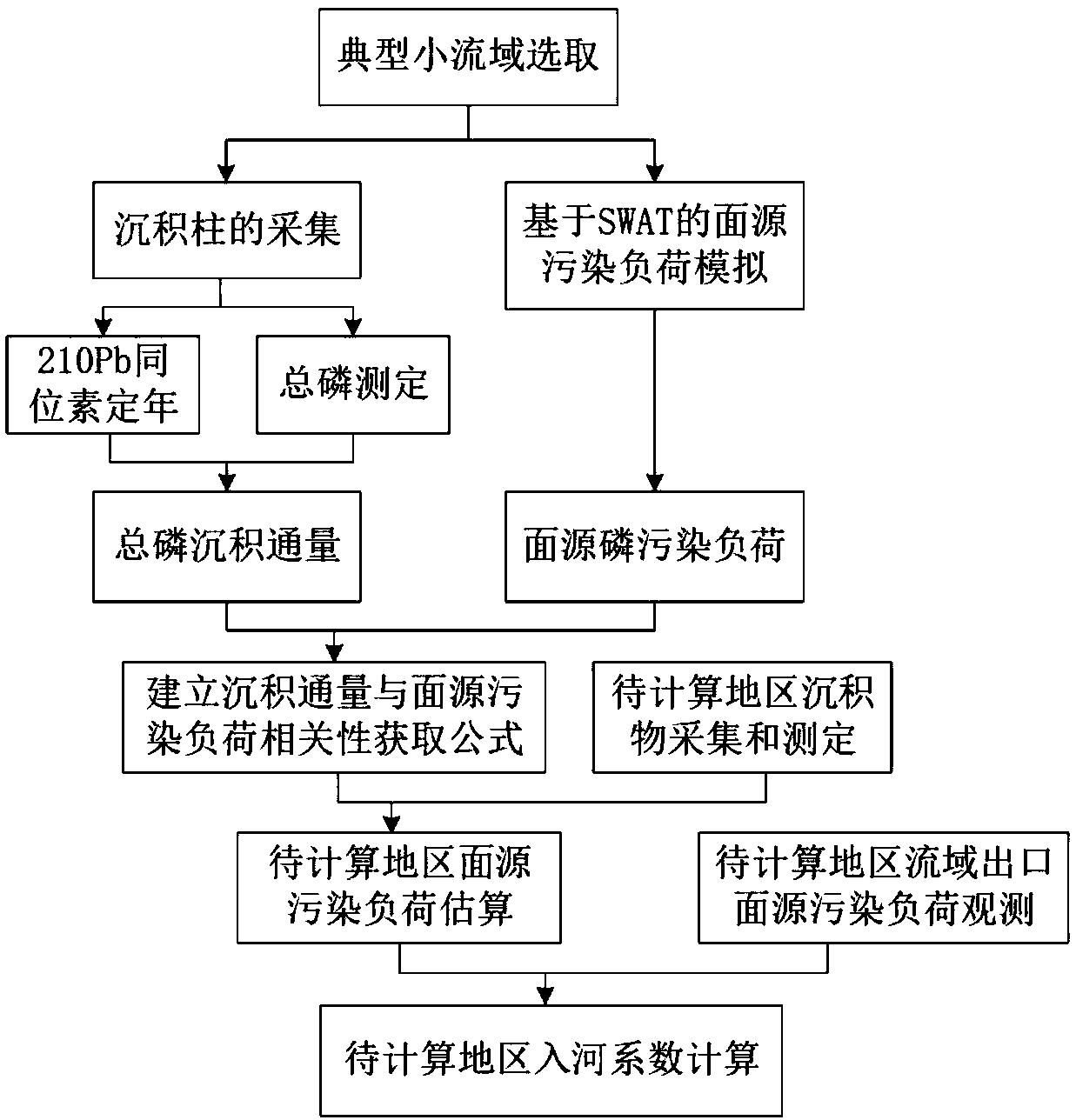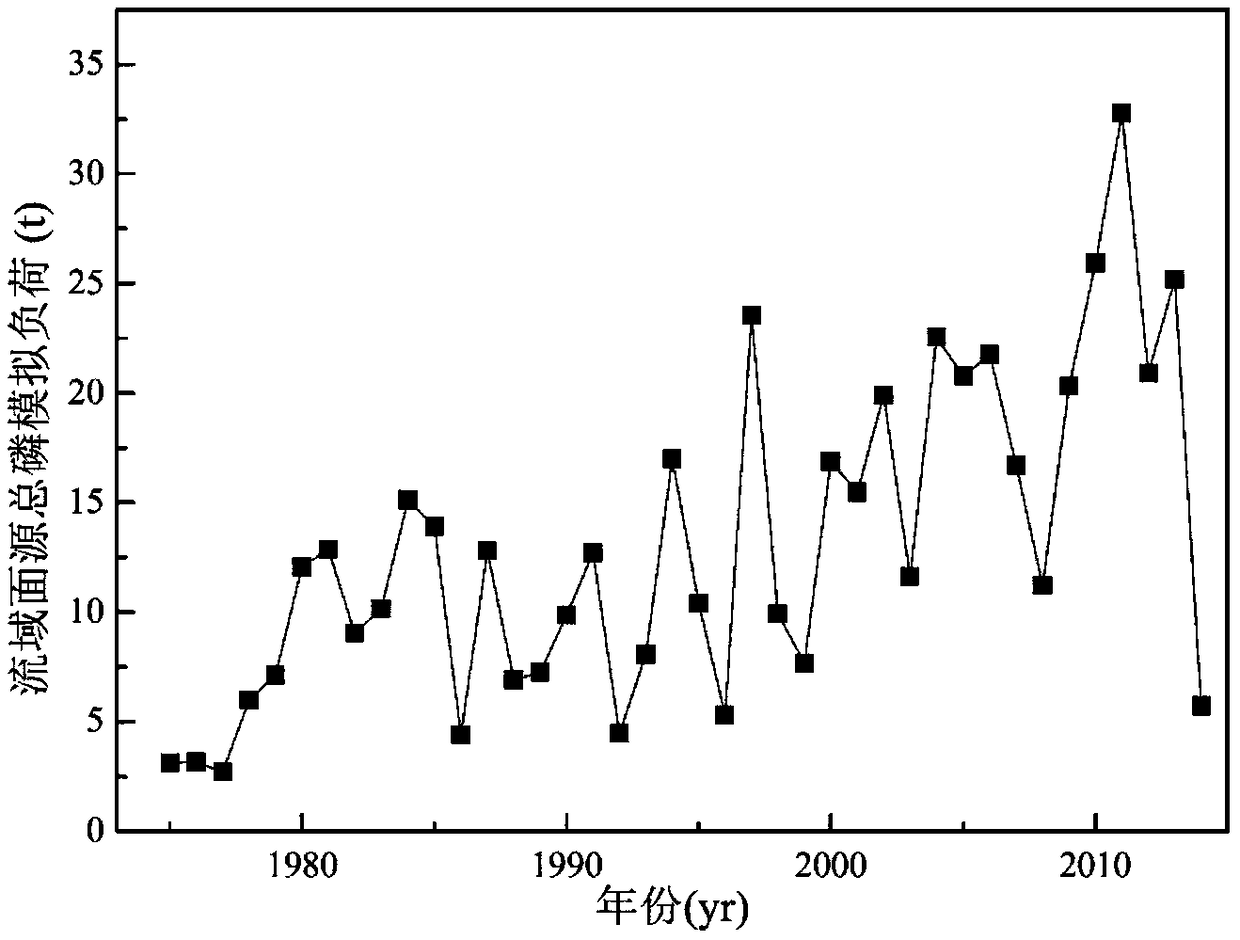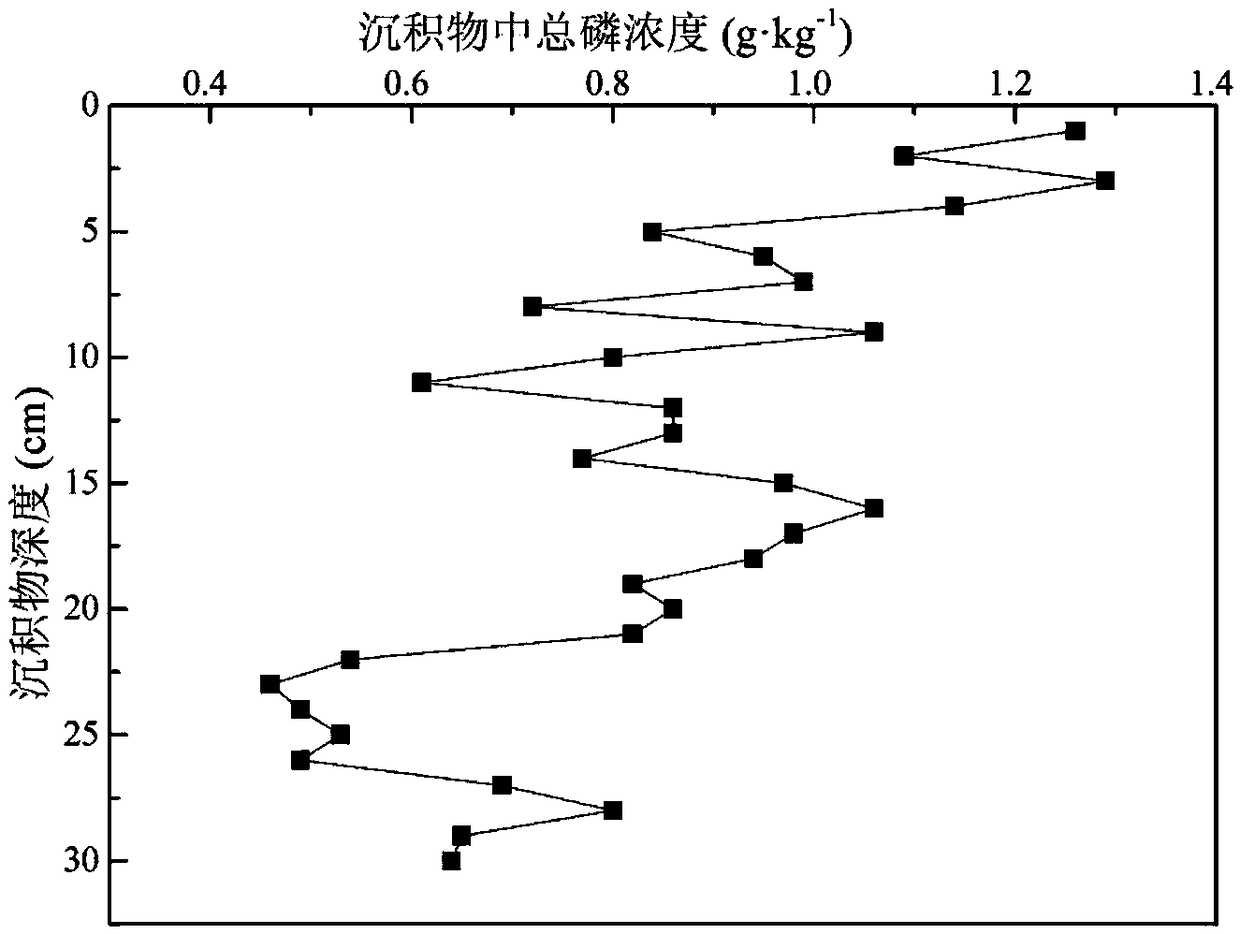Method for calculating watershed non-point source phosphorus pollution in-river coefficient in combination with sediments and models
A technology for sediment and phosphorus pollution, applied in the field of watershed non-point source pollution assessment and management, can solve the problems of numerous parameters, high data requirements, and difficulty in wide-scale promotion, and achieve accurate results
- Summary
- Abstract
- Description
- Claims
- Application Information
AI Technical Summary
Problems solved by technology
Method used
Image
Examples
Embodiment Construction
[0056] The present invention is a new method for calculating the river basin non-point source phosphorus pollution inflow coefficient based on the combination of sediment and model simulation. The specific steps are as follows:
[0057] step one:
[0058] This case selects the Abujiao River Basin, a typical agricultural small watershed located in Bawujiu Farm in Northeast China, as a case study. Landsat TM data was interpreted by remote sensing to obtain land use data of the study area in 1979, 1992, 2000, 2005 and 2010. Soil property data were extracted from the National Soil Database and updated through field experiments. Meteorological data are obtained from local weather stations, including rainfall, maximum temperature, minimum temperature, relative humidity, wind speed, and sunshine hours. Agricultural management measures in the study area, such as agricultural production status, fertilization conditions, irrigation and drainage methods, fertilization amount, etc., are...
PUM
 Login to View More
Login to View More Abstract
Description
Claims
Application Information
 Login to View More
Login to View More - R&D
- Intellectual Property
- Life Sciences
- Materials
- Tech Scout
- Unparalleled Data Quality
- Higher Quality Content
- 60% Fewer Hallucinations
Browse by: Latest US Patents, China's latest patents, Technical Efficacy Thesaurus, Application Domain, Technology Topic, Popular Technical Reports.
© 2025 PatSnap. All rights reserved.Legal|Privacy policy|Modern Slavery Act Transparency Statement|Sitemap|About US| Contact US: help@patsnap.com



